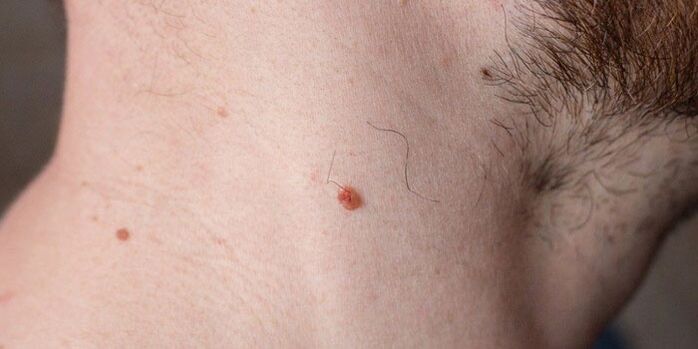If such growth appears on a person's skin, then he asks what kind of changes have taken place in the body and are they not dangerous? Read on for useful information about the characteristics of different types of papillomas. This information will help you recognize the presence of such formations to address them in a timely manner, if necessary.
Papilloma varieties
Why do these processes usually appear on the skin with age? These skin changes are caused by the human papillomavirus, or simply HPV. After infection with this pathogen, the patient develops a papillomatosis disease, during which warts of various forms appear on the skin or mucous membranes. These growths are benign, but some types of papillomas are at high risk of respawning as a malignant tumor. For this reason, you should definitely visit a doctor if you notice these changes in your skin!
Medicine knows more than 40 varieties of papillomaviruses, which cause various forms of the disease in humans. The type of virus that has entered the body depends on the appearance of the papilloma, because the infection manifests itself externally by different types of formations in the body's integument. According to the general classification, the following types of growths are distinguished.
- Simple, also called vulgar - dark colored keratinized growths.
- Plantar - affects the soles of the feet.
- Acrochords are filiform formations whose body rests on one leg.
- Flat formations or common warts - usually occur in teenagers in the area of the hands, fingers, face.
- Pointy - located in the mucous membranes of the oral cavity, genitals or anus.
- Squamous cells - These consist of the squamous epithelium, which has grown due to the effects of the virus, and the stroma (the base of connective tissue and blood vessels).
- Basal cell - grows from cells in the basal layer of the epidermis or hair follicles.
- Internal - arise not in the area of visible external parts of the body, but where they are difficult to notice, for example, in the larynx or bladder.

Pointed
These growths are often called warts. Its characteristics are its small size and special shape: a wide base and a sharp tip. These warts are flesh-colored or slightly pink and appear individually or in groups. They are distinguished by rapid growth: in a few days, where there has been only one growth, a whole group of them is formed. In shape, this family resembles a cauliflower inflorescence. Genital warts are usually located on the mucous membranes: in the mouth, on the tongue, as well as in the genital area or near the anus.
scaly
This form of skin growth caused by the HPV virus is one of the most common, as it can be very widely located throughout the body. What does a papilloma of this type look like? They are flat, round or oval-shaped formations, slightly protruding above the surface of the skin - no more than 1 mm, may be soft and show signs of keratinization. They often appear in groups, in color they hardly differ from the surrounding coverage.
These growths occur mainly on the upper part of the body: on the face (eg on the nose or lip), neck. They usually appear on the mucous membranes: inside the mouth, cheeks or tongue. Squamous cell tumors can be diagnosed in the esophagus, larynx, organs of the genitourinary system and even in the rectum. People with these formations are advised to remove them due to the high risk of degeneration into a malignant form.
basal cell
These growths are often called basaliomas or senile warts because they tend to affect the skin of older people. These formations grow slowly from the basal layer of the epidermis (hence the name) or from the hair follicles, appearing on the surface of the skin as pinkish to dark brown papillae. Areas of the body where basal cell carcinomas are common are the armpits, back, lips, and nose. Its distinguishing feature is that they never degenerate into cancerous tumors, therefore, they are considered safe.

What do papillomas look like in intimate places
When it comes to formations in the genital area, these are sharp formations. Papillomas of this type are cells grown from the upper layer of the epithelium, which look like clusters of small papillae. These growths can affect both sexes equally. They are located in the groin and directly on the surface of the genitals: in men - in the head of the penis or in the lumen of the urethra, in women - in the vaginal mucosa, on the surface of the cervix and in the uterus itself.
Manifestations of changes in the integument of the genital organs, which occur as a result of human infection by the HPV virus, require special attention from the patient. He needs to see a doctor and remove the tumors on his genitals, because with the transition from this disease to a chronic form, the risk of infertility and oncology increases dramatically.
Photo: what are papillomas on the body
To imagine precisely and clearly what these formations are, it will be helpful to look at images of what these formations look like. Check out this selection of photos that show examples of different types of papillomas. Check with these photos what growths you or your loved ones have, and you can determine in advance whether these warts are subject to mandatory removal and avoid serious health risks.
















































































